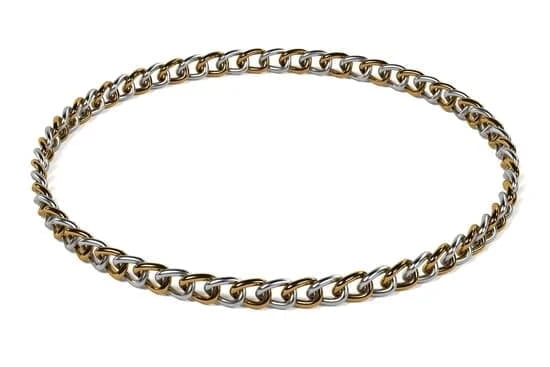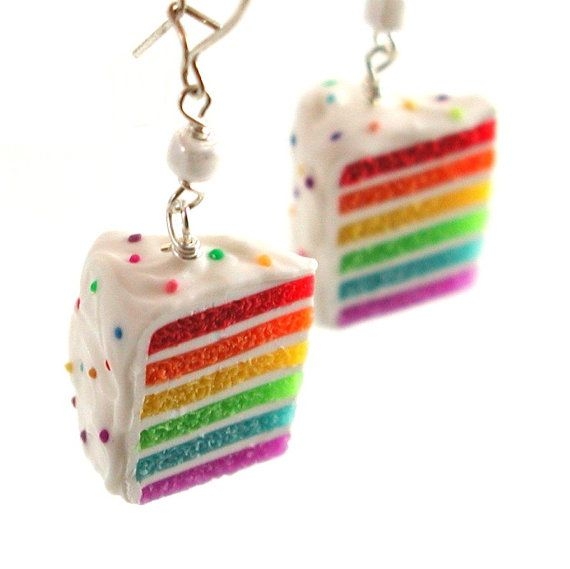The history of Georgian jewelry is a fascinating journey through the world of fashion, art, and culture. Dating back to the 18th century, Georgian jewelry holds a significant place in the evolution of jewelry design and craftsmanship. From its unique styles and materials to its enduring legacy, Georgian jewelry continues to captivate enthusiasts and collectors alike.
During the 18th century, Georgian jewelry reflected the fashion trends and styles of the time, showcasing intricate designs and exquisite craftsmanship. The use of precious gemstones and metals added a touch of opulence to these timeless pieces, making them highly sought after by royalty and aristocrats.
As we delve into the history of Georgian jewelry, we will explore the cultural and social influences that shaped its designs, as well as how it continues to impact modern jewelry trends. From Baroque to Rococo styles, Georgian jewelry represents an era of elegance and sophistication that still resonates today.
Join us on this exploration of Georgian jewelry as we uncover its beauty, significance, and lasting influence on the world of fashion and beauty.
Georgian Jewelry
During the 18th century, Georgian jewelry reflected the grandeur and elegance of the era’s fashion trends and styles. The jewelry of this period was influenced by the fashion of the time, incorporating motifs such as flowers, bows, ribbons, and intricate filigree work. These designs were often seen in necklaces, earrings, brooches, bracelets, and hair ornaments, embracing the prevailing tastes and preferences of high society.
Georgian jewelry was also characterized by its use of precious gemstones and materials such as diamonds, emeralds, rubies, sapphires, pearls, silver, gold, and non-precious pastes. During this period, jewelry craftsmanship reached new heights as artisans honed their skills in intricate metalwork and gem cutting. The elaborate designs showcased the wealth and status of the wearer while also symbolizing love, sentimentality, and mourning.
The popularity of neoclassical styles during this time also influenced Georgian jewelry designs. Inspired by ancient Greek and Roman art and architecture, jewelry pieces featured motifs such as cameos depicting classical figures or scenes from mythology. These influences would leave a lasting legacy on the history of Georgian jewelry design for years to come.
| Georgian Jewelry Features | Description |
|---|---|
| Fashion Trends | Incorporated motifs reflecting the prevailing tastes of high society. |
| Materials | Utilized precious gemstones such as diamonds and pearls along with metals like silver and gold. |
| Neoclassical Influences | Brought about designs featuring classical motifs inspired by ancient Greek and Roman art. |
The Evolution of Georgian Jewelry
Georgian jewelry encompasses a rich history, representing the trends and styles of the 18th century. One of the most fascinating aspects of Georgian jewelry is its evolution from the Baroque to Rococo styles. During the early Georgian era, from 1714 to 1837, jewelry design transitioned from the elaborate and ornate Baroque style to the more delicate and intricate Rococo style.
In the early part of the Georgian era, Baroque jewelry was characterized by its grandeur and opulence, with bold designs featuring complex patterns, large gemstones, and intricate metalwork. However, with the rise of the Rococo movement in the mid-18th century, there was a shift towards more whimsical and light-hearted designs.
This transition brought about a change in jewelry aesthetics, with an emphasis on natural motifs such as floral and foliate designs, as well as lighter, openwork settings that showcased gemstones in a more delicate manner.
One notable development during this period was the use of silver-topped gold for jewelry pieces. This technique allowed jewelers to create intricate designs that combined both metals seamlessly. Additionally, advancements in diamond cutting techniques led to an increase in the popularity of rose-cut diamonds during the Rococo period. These developments significantly influenced Georgian jewelry design and laid the groundwork for future styles and trends within the industry.
| Georgian Jewelry Style | Main Characteristics |
|---|---|
| Baroque | Elaborate designs, large gemstones, ornate metalwork |
| Rococo | Delicate and whimsical designs, natural motifs like flowers and foliage, use of rose-cut diamonds |
Georgian Jewelry Materials
Georgian jewelry is renowned for its use of precious gemstones and metals, which played a pivotal role in defining the style and elegance of this era. The materials used in Georgian jewelry were carefully selected to reflect the opulence and sophistication of the time, showcasing exquisite craftsmanship and attention to detail. Let’s take a closer look at the precious gemstones and metals that were commonly used in Georgian jewelry:
- Diamonds: Often considered the ultimate symbol of luxury, diamonds were highly favored in Georgian jewelry. They were typically set in silver or gold settings, exuding a timeless allure and adding a touch of brilliance to any piece.
- Pearls: Another beloved gemstone during the Georgian era, pearls were prized for their luminescent beauty. They adorned necklaces, earrings, and brooches, bringing an air of elegance and femininity to Georgian jewelry designs.
- Gold: Gold was the metal of choice for many Georgian jewelry pieces, revered for its lustrous sheen and durability. Both yellow and rose gold were popular options, often intricately worked into elaborate filigree patterns or delicate engravings.
In addition to diamonds, pearls, and gold, other precious gemstones such as rubies, emeralds, and sapphires were also prominently featured in Georgian jewelry designs. These stones added vibrant pops of color and further elevated the overall grandeur of each piece.
The meticulous attention given to selecting the finest materials for Georgian jewelry reflects not only the artistic sensibilities of the time but also the societal values placed on adornment and self-expression. The combination of these precious gemstones and metals culminated in breathtakingly beautiful pieces that continue to captivate admirers today. The legacy of this dedication to quality materials lives on in modern jewelry design as an enduring testament to the lasting impact of Georgian jewelry on fashion and beauty.
The Cultural and Social Influences on Georgian Jewelry
Georgian jewelry is not only a reflection of the artistic and technological advancements of the time but also a product of the cultural and social influences that shaped its designs. During the Georgian era, which spanned from 1714 to 1837, England saw immense changes in politics, society, and culture, all of which left an indelible mark on the fashion and jewelry of the time.
The societal and historical contexts in which Georgian jewelry flourished played a crucial role in defining its aesthetic and sentimental value.
The Influence of Royalty and Aristocracy
One of the most significant cultural influences on Georgian jewelry was the extravagant lifestyles of royalty and aristocracy. Wealthy individuals would commission exquisitely crafted pieces to showcase their status, power, and wealth. Jewelry became a symbol of opulence and often contained hidden messages or symbols that were meaningful within specific social circles.
The Rise of Sentimental Jewelry
The Georgian era also saw a surge in sentimental jewelry, influenced by societal attitudes towards love, friendship, and remembrance. Mourning jewelry, for example, gained popularity during this time as it served as a tangible expression of grief following the death of a loved one. Lockets containing a lock of hair or miniature portraits were commonly worn as mourning jewelry.
Influence of Global Exploration
The exploration and colonization efforts during the Georgian era introduced new gemstones and materials to England. This influx had a lasting impact on jewelry design as it expanded the range of available materials for craftsmen to work with. The use of exotic gemstones such as diamonds from India, pearls from the Middle East, and turquoise from Persia became increasingly prevalent in Georgian jewelry.
The history of Georgian jewelry illustrates how deeply intertwined it was with the cultural shifts and social dynamics of its time. Understanding these influences allows us to appreciate not only the beauty but also the significance behind each piece created during this remarkable era.
Notable Georgian Jewelry Pieces
Georgian jewelry is known for its timeless beauty and exquisite craftsmanship, with many pieces still revered to this day as iconic examples of design and artistry. From intricate floral motifs to stunning gemstone settings, Georgian jewelry showcases the elegance and opulence of the 18th century. Here are some notable Georgian jewelry pieces that have stood the test of time:
- The Chalcedony and Diamond Tiara: This stunning tiara, featuring delicate chalcedony flowers accented with sparkling diamonds, exemplifies the romantic and nature-inspired designs popular during the Georgian era. It remains a coveted piece in many jewelry collections, reflecting the enduring appeal of Georgian style.
- The Portrait Miniature Brooch: Portrait miniatures were a popular form of personal adornment in the 18th century, and this exquisite brooch is a prime example of the artistry involved. Often depicting loved ones or historical figures, these miniature paintings served as sentimental keepsakes and are highly sought after by collectors today.
- The Cannetille Earrings: Cannetille work, characterized by intricate wire filigree and granulation, was a hallmark of Georgian jewelry. These elaborate earrings showcase the mastery of this technique and exemplify the delicate yet impactful designs favored during this period.
These iconic pieces not only reflect the exceptional artistry of Georgian jewelry but also serve as a testament to the lasting legacy of this era in shaping modern jewelry design.
Enduring Legacy of Georgian Jewelry
Georgian jewelry continues to have a lasting impact on modern jewelry design and trends. The exquisite craftsmanship and intricate designs of Georgian jewelry have inspired contemporary jewelers and designers, influencing the styles and techniques used in creating new pieces. This enduring legacy can be seen in the revival of vintage-inspired designs, as well as the continued use of certain gemstones and metals that were popular during the Georgian era.
Influence on Contemporary Designs
The influence of Georgian jewelry on modern designs can be observed in the use of filigree work, delicate engravings, and intricate metalwork. These are all characteristics that were prominently featured in Georgian jewelry and are now incorporated into contemporary pieces. Additionally, the popularity of rose-cut diamonds, which were commonly used during the 18th century, has seen a resurgence in modern jewelry designs as a result of the influence of Georgian jewelry.
Revival of Vintage Styles
Georgian jewelry has also played a significant role in the revival of vintage styles within the world of fashion and accessories. Many modern brides opt for antique Georgian engagement rings or replicas inspired by designs from this era. The timeless elegance and romantic aesthetic of Georgian jewelry continue to captivate individuals seeking unique and meaningful pieces that tell a story through their intricate details.
Continued Use of Gemstones and Metals
The history of Georgian jewelry has also contributed to the continued use of certain gemstones and metals in modern jewelry design. From vibrant colored gemstones like garnets and emeralds to precious metals such as gold and silver, these materials remain popular choices for contemporary jewelers who draw inspiration from the rich heritage of Georgian jewelry.
By incorporating these elements into their creations, designers pay homage to the timeless allure of Georgian jewelry while adding their own creative flair to each piece.
Conclusion
In conclusion, the history of Georgian jewelry offers a fascinating glimpse into the fashion and societal trends of the 18th century. The exquisite craftsmanship, use of precious materials, and intricate designs reflect the elegance and sophistication of the era. From the Baroque to Rococo styles, Georgian jewelry has evolved and adapted to cultural and social influences, leaving behind a rich legacy that continues to inspire modern jewelry design.
The enduring allure of Georgian jewelry lies in its timeless beauty and significance. Each piece carries with it a story of artistry and historical context, making it not just a fashion statement but also a treasure trove of cultural heritage. The use of precious gemstones and metals reflects the opulence of the period, while the intricate motifs and designs showcase the skill and creativity of artisans during that time.
Furthermore, Georgian jewelry continues to influence contemporary fashion trends, with its elegant aesthetic and intricate detailing being reinterpreted in modern designs. Its lasting impact on the world of fashion and beauty is undeniable, as it remains a source of inspiration for designers and collectors alike. The timeless allure of Georgian jewelry is a testament to its enduring legacy, cementing its place in history as an essential part of the evolution of jewelry design.
Frequently Asked Questions
How Can You Tell Georgian Jewellery?
Georgian jewelry can be identified by its intricate designs, use of precious metals like gold and silver, and the incorporation of gemstones such as diamonds, rubies, emeralds, and sapphires. It often features nature-inspired motifs like leaves, flowers, and birds.
How Old Is Georgian Jewelry?
Georgian jewelry refers to pieces that were made during the reigns of the first four King Georges of England from 1714 to 1837. This means that Georgian jewelry is around 200 to 300 years old, making it highly sought after by collectors and enthusiasts alike.
What Stones Were Used in Georgian Jewelry?
The stones commonly used in Georgian jewelry include diamonds, garnets, pearls, topaz, amethysts, and turquoise. Diamonds were particularly popular during this period due to their availability and desirability among the elite. These stones were often cut in a manner that reflected the fashion and technology of the time.

Welcome to my jewelry blog! My name is Sarah and I am the owner of this blog.
I love making jewelry and sharing my creations with others.
So whether you’re someone who loves wearing jewelry yourself or simply enjoys learning about it, be sure to check out my blog for insightful posts on everything related to this exciting topic!





